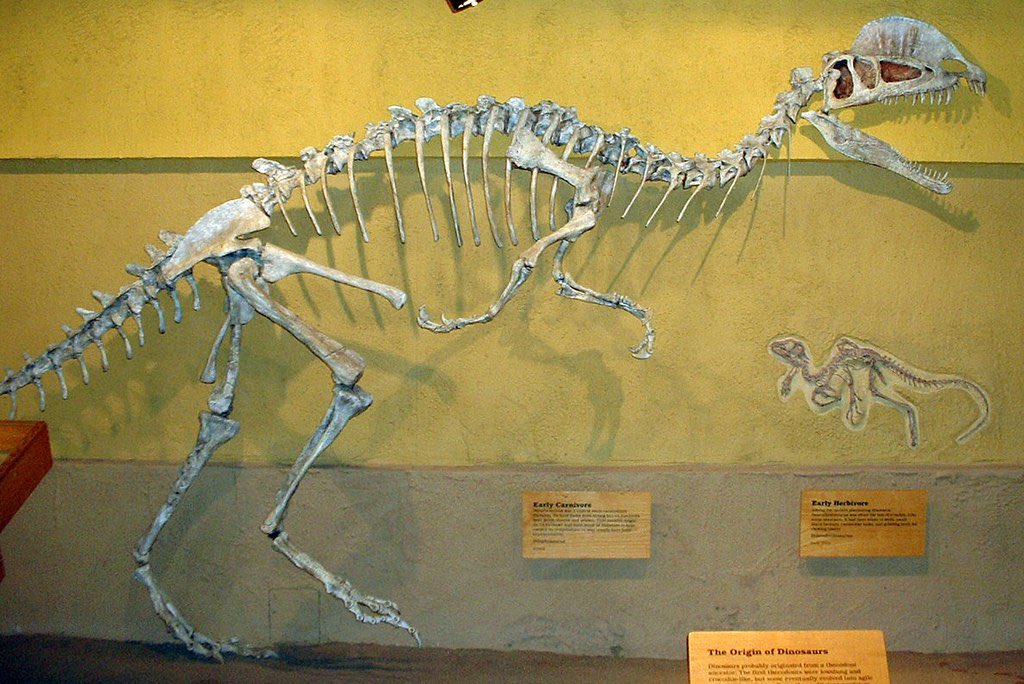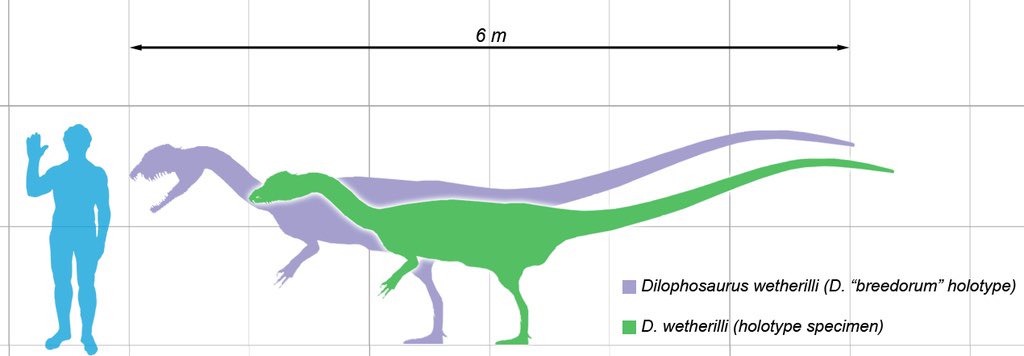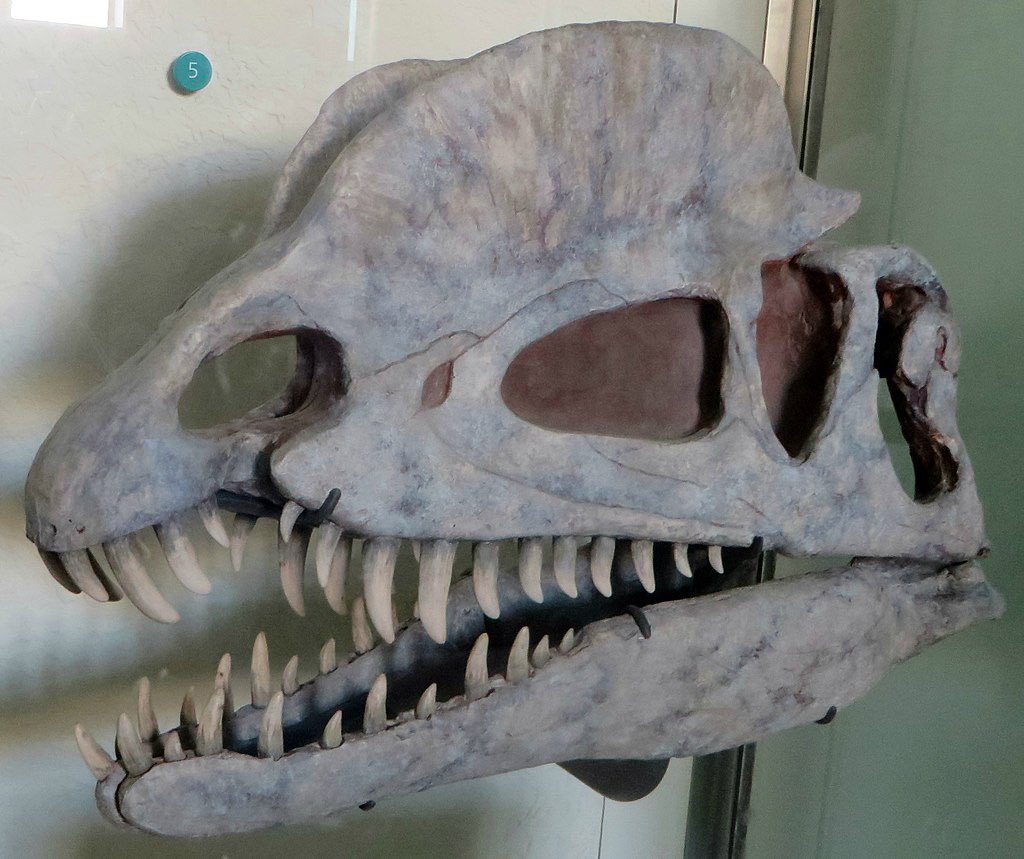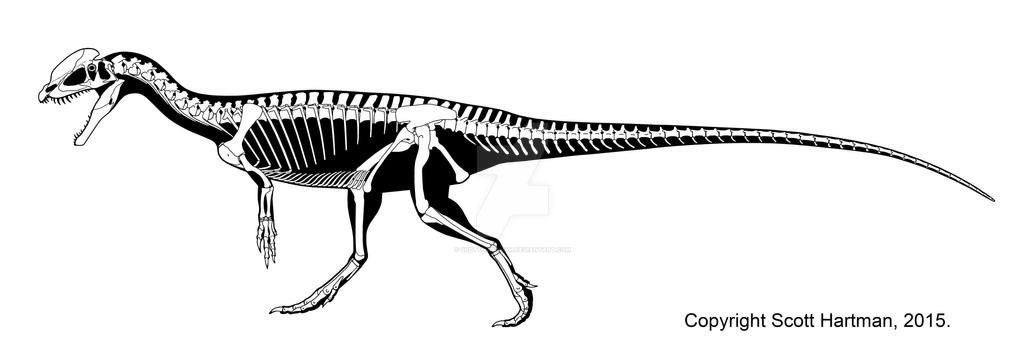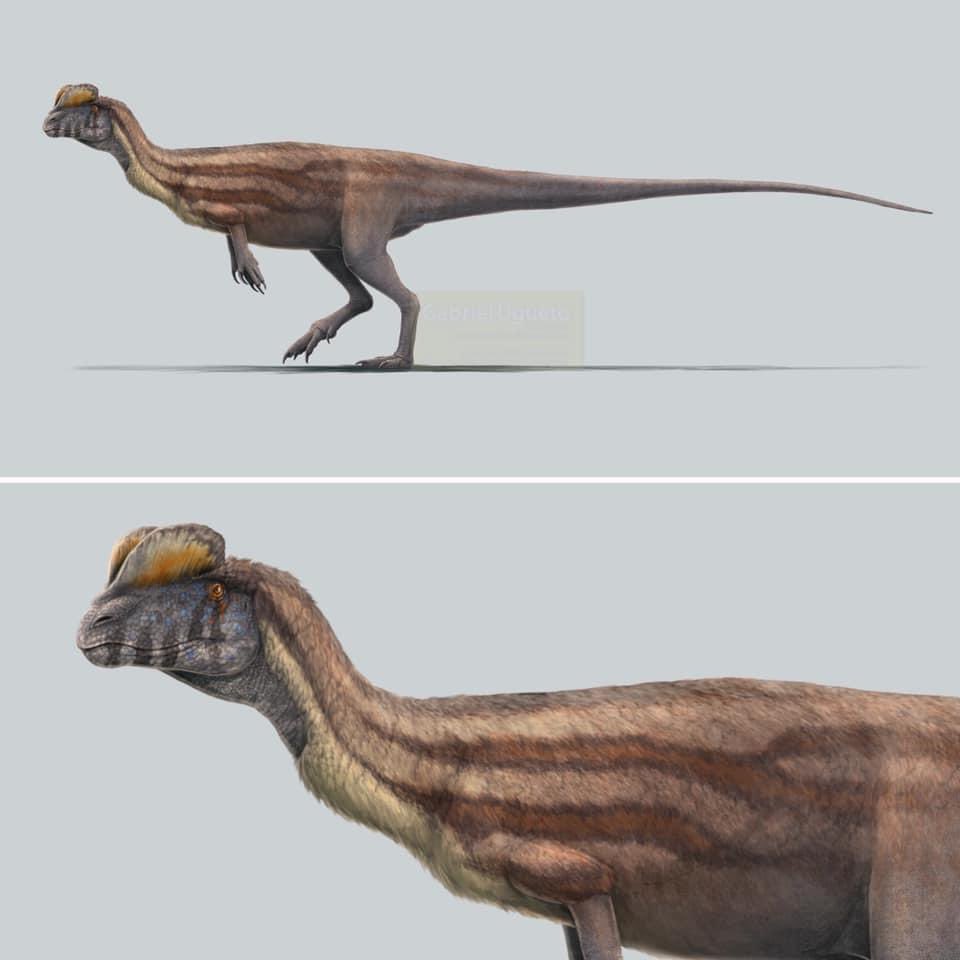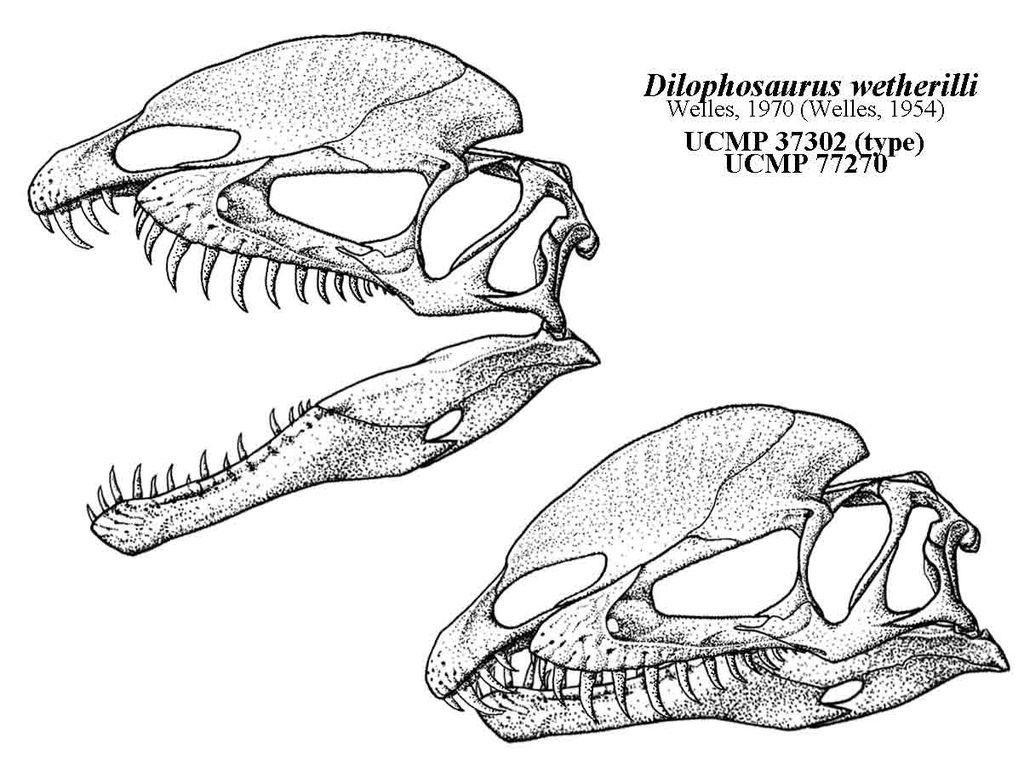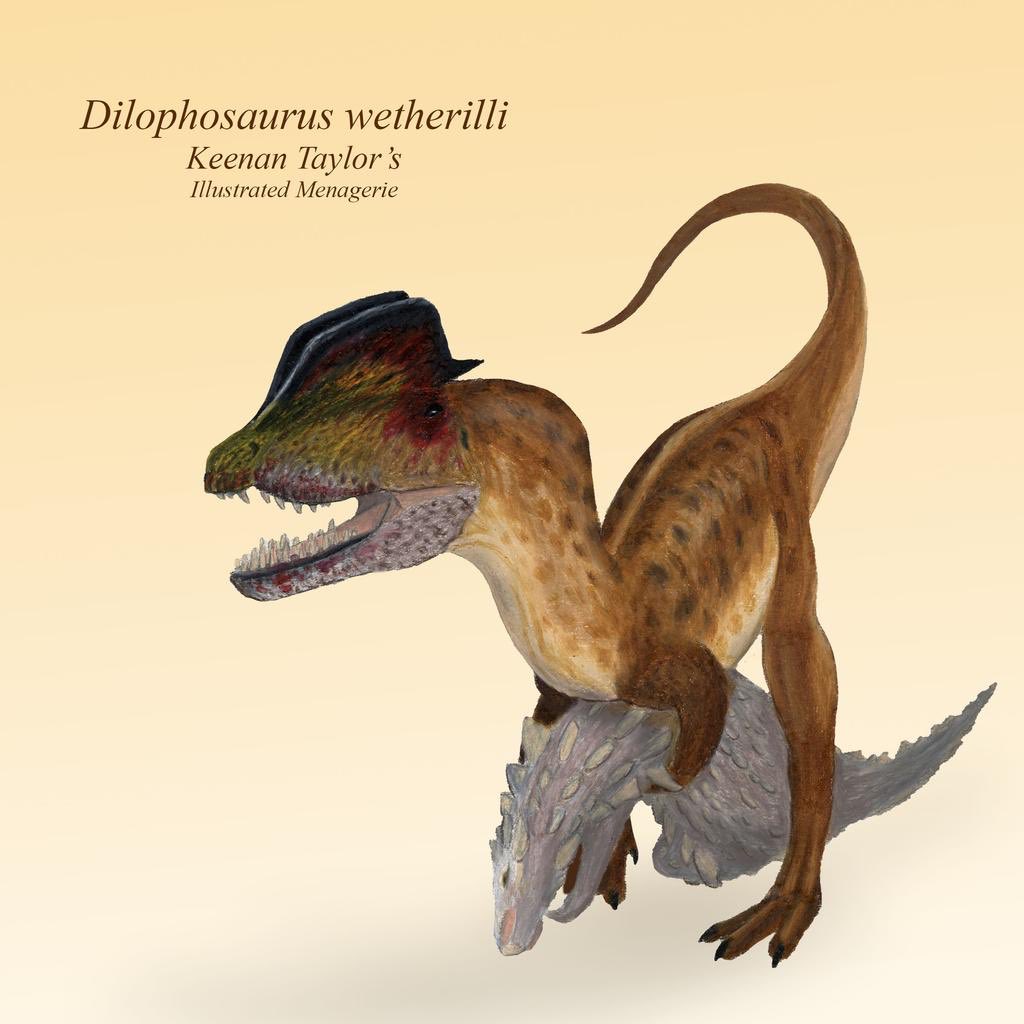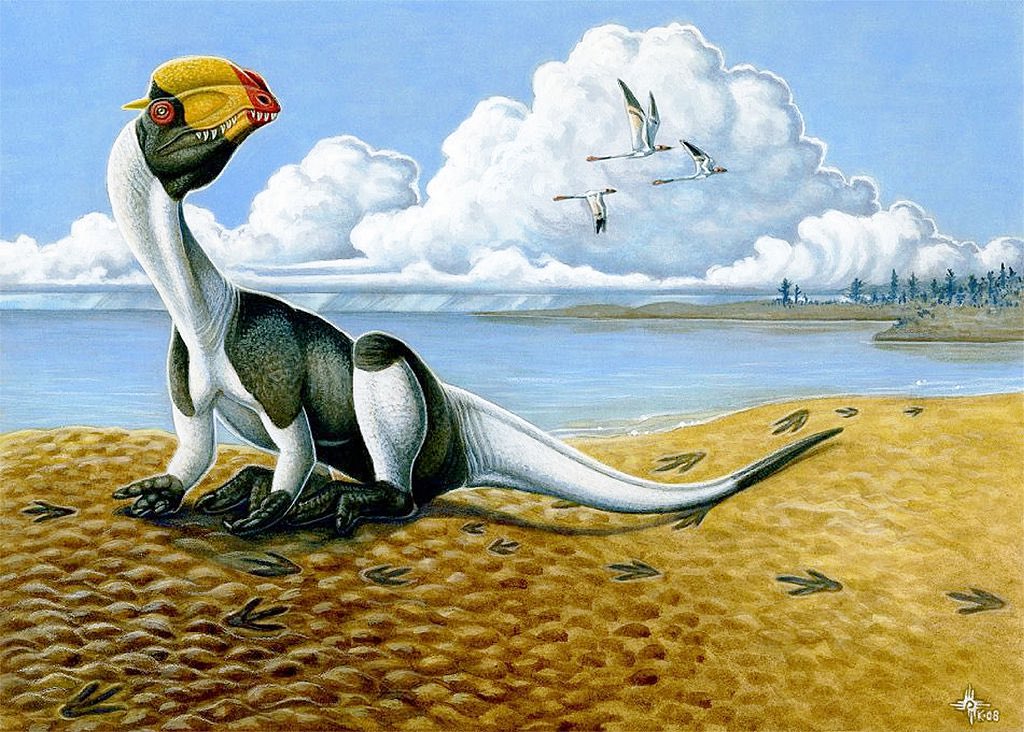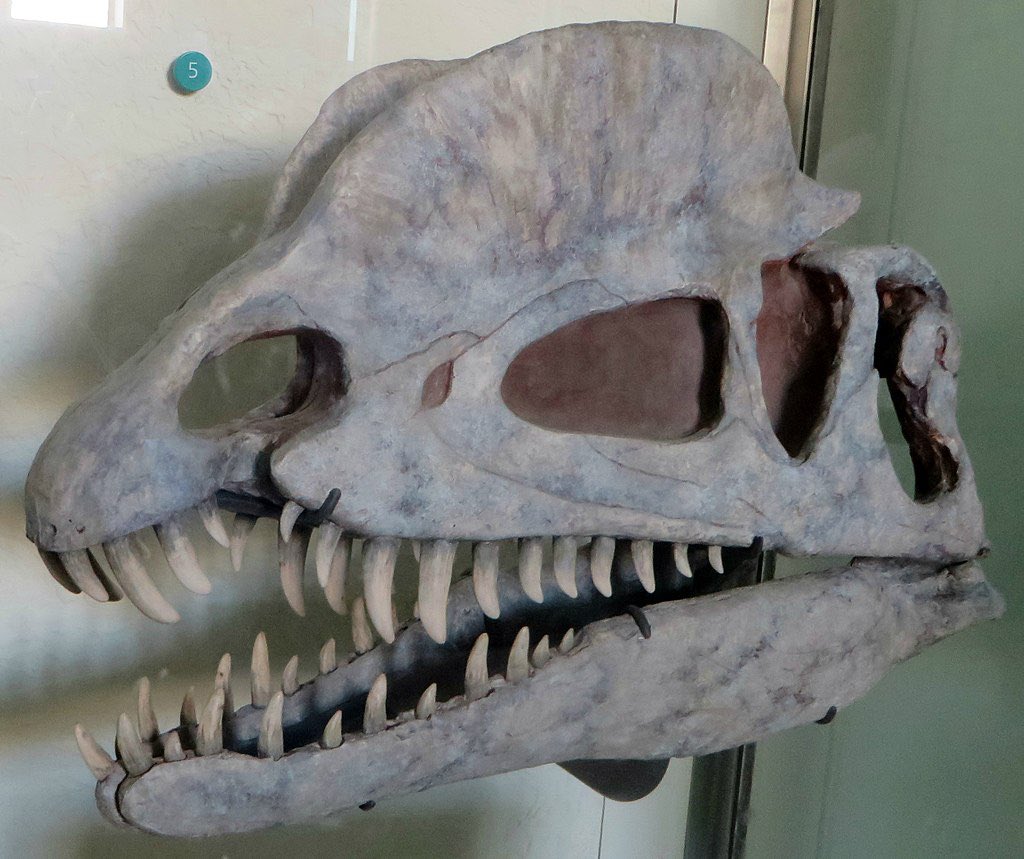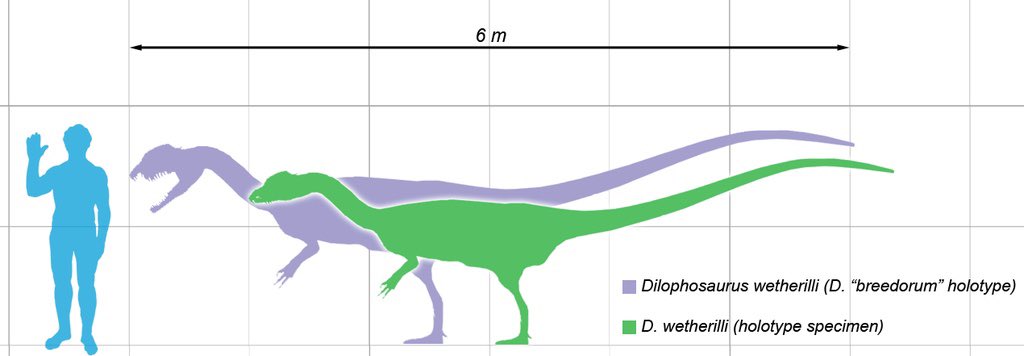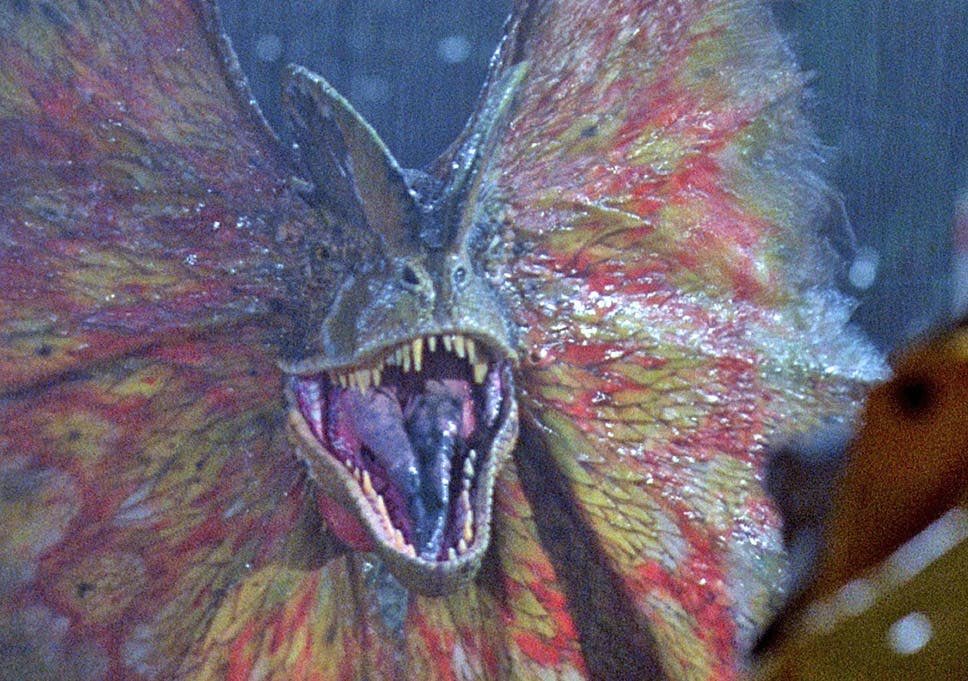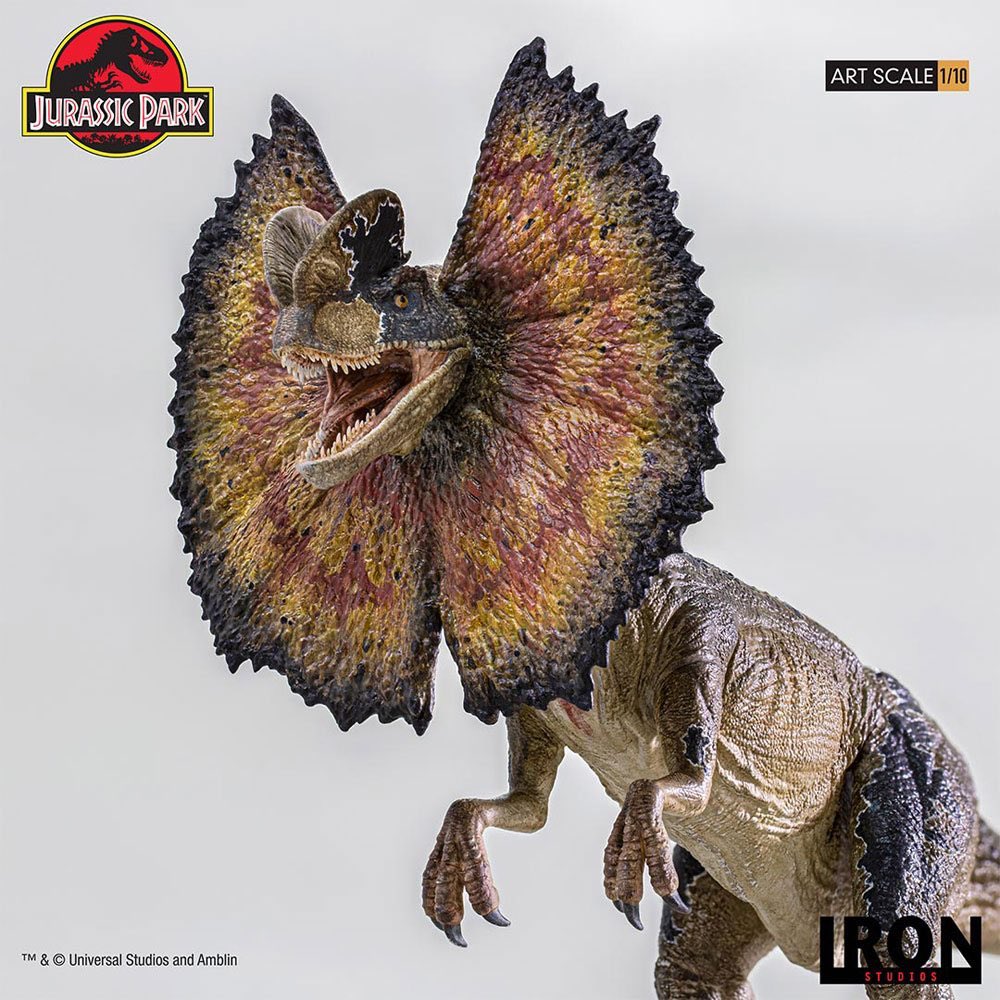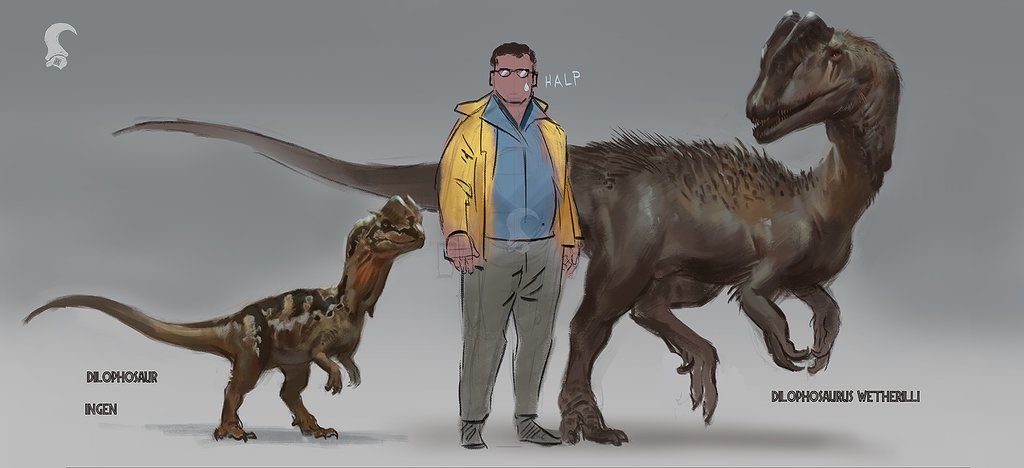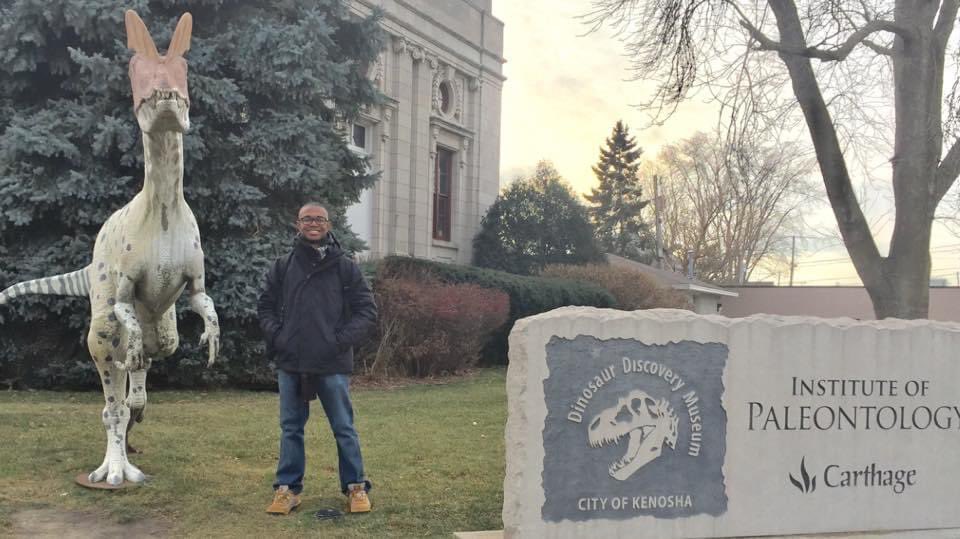26. For #TheSummerOfTheropods and #FossilFriday, here’s a more familiar theropod, #Dilphosaurus, the “double crested lizard”, a theropod dinosaur that lived in North America during the Early Jurassic with fossils found in Arizona. Mount from @RoyalTyrrell
Dilophosaurus was an early medium-sized theropod, slender and light, but comparable in size to a brown bear. The largest known specimen measured 23 ft in length and weighed 880 lbs. Art by Matt Martyniuk & Ville Sinkkonen.
The skull was large, but delicate as the snout was narrow and the upper jaw had a major gap below the nostril similar to spinosaurids. The mandible was slender and delicate at the front, but deep at the back. The teeth were long, curved and thin. Skull from @AMNH
Dilophosaurus had a pair of thin, plate-shaped crests on the roof of the skull. The rest of the body was also impressive, as Dilophosaurus had a long, flexible neck, along with long, powerful arms and sharp claws on each hand. Art by @skeletaldrawing and @SerpenIllus.
To quote John Goodman of “When Dinosaurs Roamed America”, “Dilophosaurus was a triple threat as it could run, slash, and bite”. Video by @king_tyranno
Studies have been conducted on Dilophosaurus in terms of feeding behavior, motion, crest function, development, and paleopathology.
Feeding behavioral studies have shown that Dilophosaurus did not have a powerful bite due to the subnarial gap and probably fed on smaller prey. Art by Jaime A. Headden
The arms were found to be very strong and flexible, as seen in a 2018 study by Senter and Sullivan where Dilophosaurus was able to grip and hold objects, bring an object close to its mouth and belly, swing its arms in an arc, as well as scratch its belly. Art by @TaylorMenagerie.
Footprints have also been found, providing an idea on the locomotion of Dilophosaurus, in addition to crouching a rarely captured behavior of theropods. Art by Heather Kyoht Luterman
The function of the crests is unknown, but would have functioned as a possible display feature to impress potential mates.
Histological studies were conducted on a couple of Dilophosaurus skeletons indicating that the largest specimen was an adult, and the smaller specimens were juveniles.
In addition, various paleopathologies ranging from disease, injuries and malformations have been studied in Dilophosaurus.
Dilophosaurus lived alongside sauropodomoprhs, the small theropod Megapnosaurus, armored dinosaurs, pterosaurs, early mammals, fish, turtles, and amphibians. Art by ABelov2014
Dilophosaurus was prominently featured in the 1990 novel Jurassic Park and its 1993 movie adaptation, where it had killed Dennis Nedry.
In the novel, the Dilophosaurus was able to spit venom followed by killing Nedry, very graphically. In the movie, it had a frill around its neck similar to a frilled-neck lizard, as well as spitting venom. It was smaller than its real life counterpart though. Art by RAPHTOR.

 Read on Twitter
Read on Twitter